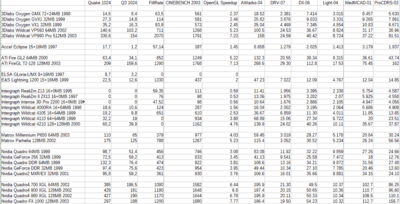I can offer some input on SGIs: O2's are pretty common but they use proprietary memory which is very expensive and getting very hard to find. 1GB can go for $600 or more through an SGI reseller. I believe they were commonly shipped with 64 or 128mb.
SGI Indy systems are also fairly common but I haven't seen any dirt cheap ones on Ebay for a while, was a time when you could pick one up for under $75 shipped. I don't think they use anything other than commodity RAM, I know the Indigo 2s just use regular 72 pin FPM RAM, those might be your best bet if you were looking to have a maxxed-out system but I suggest getting one with a High Impact graphics option at minimum, preferably with the TRAM module. Max Impact will cost you megabucks these days, as lots of people would strip an Indigo 2 for parts and resell the more valuable bits. This leads to the odd situation where sometimes it is cheaper to buy an entire SGI to get a part in it that you need. Plus you have extra spares.
The software for these systems is very hard to get. You're talking about software that cost $20,000 to $40,000 per license back in the day, depending on what plugins you bought. Blender has an Irix release I'm pretty sure, but don't know what version they stopped at.
SGI Depot is a good spot to get parts or whole systems, or Irix media: http://www.sgidepot.co.uk/sgi.html. Ian is a good guy, I've bought from him before. Another site that has systems and parts is www.mashek.com. You will of course pay a higher price than Ebay but the systems are generally in better condition and you can get a warranty, if that is important to you. The current exchange rate will hurt a little bit at SGI Depot but not as badly as when it was 2 dollars to 1 pound.
PC side, there wasn't much until the mid to late 90s and early 2000's. 3d Studio DOS was pretty much it from 1991 until whenever they released 3ds Max, maybe 1995 or 1996? Memory is fuzzy on that one. I don't remember when exactly Maya and Soft Image became available on PC but I want to say it was around 2000 to 2004. Lightwave may have been on PC as early as 97 or 98, I want to say I was using it on NT workstations at that time but can't remember for sure.
As to what a good workstation for 3d Studio DOS was: a very high end 386 like a 33 or 40mhz system with 8 or 16mb of RAM and 200MB or larger disk might have been what you were using when v1 came out, if you were well-healed. When I first started using v3 a 486-dx2 66 was pretty much the shit, and 3DS was rock solid if you ran it on OS/2. There was a minor performance hit to the interface but not enough for me to really notice. A fast pentium would have been what you'd be using for Max or Lightwave or a dual processor Pentium Pro or Pentium II based system if you had the money, and exactly what part of the late 90s we are talking about.
Before about 1990 or 1991 there really wasn't much available for 3D on the PC. Autocad, Turbocad, maybe other more obscure CAD packages. Povray, of course. Deluxe Paint for bitmaps and such. Nothing really animation wise, other than Disney Animator and Autodesk Animator Pro and I think certain versions of Deluxe Paint had animation features.
Oh almost forgot: there was also Imagine 1 and 2 for DOS, I think version 4 was the highest DOS version? Never used Imagine, I believe it is abandonware now. I know they had a site where you could download it but even that may be down now.
Hope you find this helpful.

